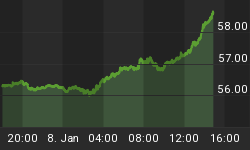When it comes to government economic data, it is easy to get terribly confused. In recent years, it also has become easy to be more and more suspicious of the numbers themselves.
In his guest series, of which this is the second installment, friend and client, Walter J. "John" Williams, helps clear up much of the confusion. I doubt, though, readers will find this will be the case with regard to the suspicion!
We published the first installment in this series, "Employment and Unemployment Reporting," on 8/24. It drew immense interest. I believe readers will find the current offering, "Federal Deficit Reality," even more provocative. Here's a taste of what the article contains:
"The U.S. government's fiscal ills have spun wildly out of control and no longer are containable within the existing system. As detailed in this article, the actual annual shortfall in U.S. government operations for fiscal year 2003 (September 30) was $3.7 trillion. Put in perspective, that means if the U.S. Treasury had seized all wages and salaries in 2003 with a 100% income tax, there still would have been a deficit! The outlook for fiscal 2004 numbers is even worse."
Speaking of provocative, John Williams' first installment drew a response from the Bureau of Labor Statistics. This is discussed in the last section of the current material, and it is entitled, "Addendum to Installment One."
John has a long, distinguished record of following and critiquing the changes occurring over the years in the government's reporting of the economic numbers that can and do influence our lives in a major way. In addition to today's and the earlier installment, I envision at least two more we will be publishing. One will deal with gross domestic product, the other with the Consumer Price Index. To state that what people observe today in these series seems at times to have become a little "mystifying" is to engage in significant understatement!
John has again agreed to field any questions or comments this piece generates. You will find this invitation at the conclusion of the article.
The first installment included an introduction section intended to serve that function for the entire series; it was labeled "Series Introduction." It contained a great deal of key definitional material and was highly enlightening in its own right.
For convenience and reference purposes, this section is repeated in the current material, found at the conclusion of the installment. If you have not yet had a chance to read the "Series Introduction," you might want to have a look it before reading the current or prior installments.
John Williams joins a growing list of guest contributors who have provided some terrific material in the short time the GRA website has been in existence. When you have a moment, go to the website's "Guest Contributions" section on the home page (lower right-hand column) and peruse some of the other work available there. Incidentally, if you did not read the first installment of John's series, you will find it posted in the "Guest Contributions" section.
(NOTE: The views expressed in the following material do not necessarily reflect those of Gillespie Research Associates.)
Now, access, read and enjoy: Government Economic Reports: Things You've Probably Suspected but Were Afraid to Ask! -- Federal Deficit Reality.
















